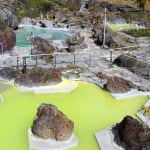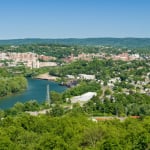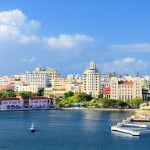Name: Dazu Rock Carvings
Address: 406 County Rd, Dazu Qu, Chongqing Shi
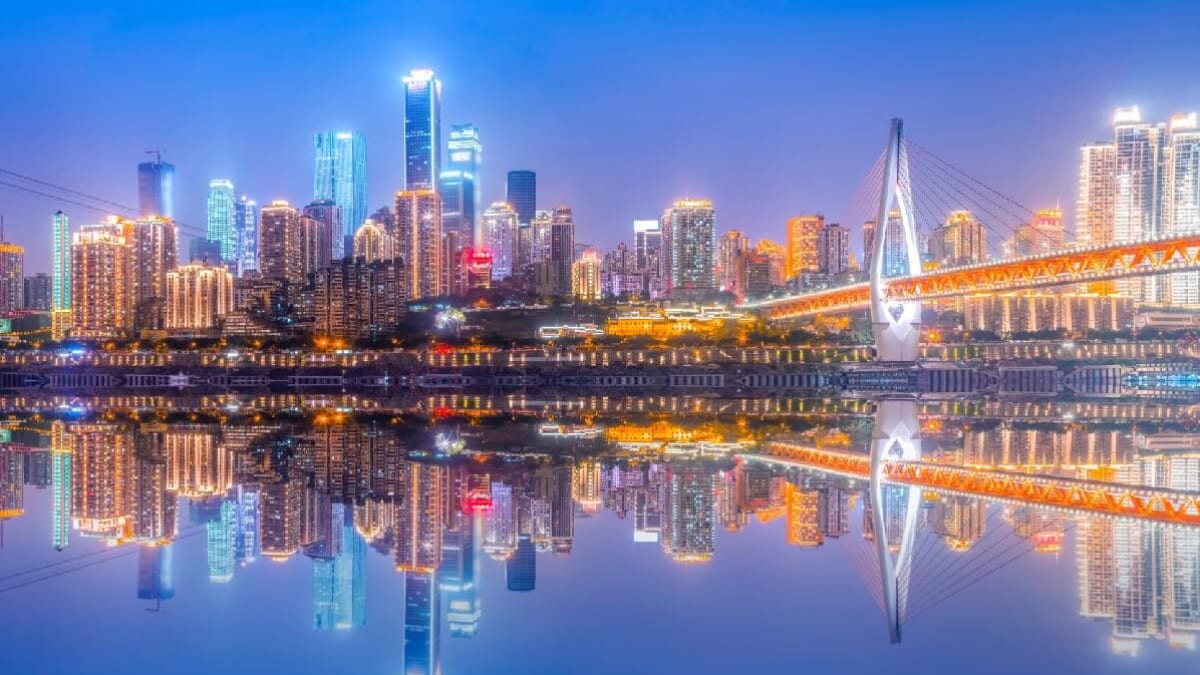
20 Recommended Tourist Spots in Chongqing | The Home of Pandas & The City of Hot Springs
Chongqing, a directly controlled municipality in China with a rugged landscape, is the largest commercial and industrial city in the southwest region of the country. The city center is lined with skyscrapers, offering many tourist spots where visitors can enjoy the breathtaking night views unique to a metropolis. At the same time, traditional townscapes filled with old-fashioned houses still remain, exuding a nostalgic charm. With so many attractions to explore, we have carefully selected and will introduce the highlights of Chongqing’s charm!
table of contents
[x] close
20 Recommended Tourist Spots in Chongqing | The Home of Pandas & The City of Hot Springs
- 1. Dazu Rock Carvings
- 2. Wulong Karst
- 3. Great Hall of the People
- 4. Chongqing Three Gorges Museum
- 5. Beishan Park
- 6. Ciqikou Ancient Town
- 7. Baidi City
- 8. Eling Park
- 9. Chongqing Zoo
- 10. Gele Mountain Forest Park
- 11. Bai Gongguan and Zhazidong
- 12. Chongqing Luohan Temple
- 13. Chongqing Beibei Hot Springs
- 14. Pipashan Park
- 15. Guiyuan
- 16. Chongqing Safari Park
- 17. Chaotianmen
- 18. Huguang Guild Hall
- 19. Chongqing Liberation Monument
- 20. Three Gorges Cruise
- ◎ Summary of Chongqing's Tourist Attractions
1. Dazu Rock Carvings

The Dazu Rock Carvings, a magnificent collection of Buddhist stone carvings, have been continuously expanded since their initial creation in 649 AD, now boasting an astonishing 50,000 statues. These intricately carved Mahayana Buddhist stone figures are spread across 28 locations, with the majority concentrated in five main areas: Baoding Mountain, Beishan Mountain, Nanshan Mountain, Shizhuanshan Mountain, and Shimenshan Mountain.
Among them, the carvings on Baoding Mountain, originally built as an esoteric Buddhist site, are said to be in the best condition. Created by the local monk Zhao Zhifeng over a span of 73 years, the highlight of Baoding Mountain is the grand 31-meter-long reclining Buddha of Shakyamuni, an overwhelming sight of monumental stone craftsmanship.
Equally famous alongside Baoding Mountain is the Beishan Mountain rock carvings. The statues of Samantabhadra riding an elephant, Peacock King, and the Thousand-Hand Guanyin (Charming Guanyin) are highly regarded for their artistic excellence and were designated as a UNESCO World Heritage Site in 1999. Be sure to witness this awe-inspiring collection of stone carvings up close!
2. Wulong Karst
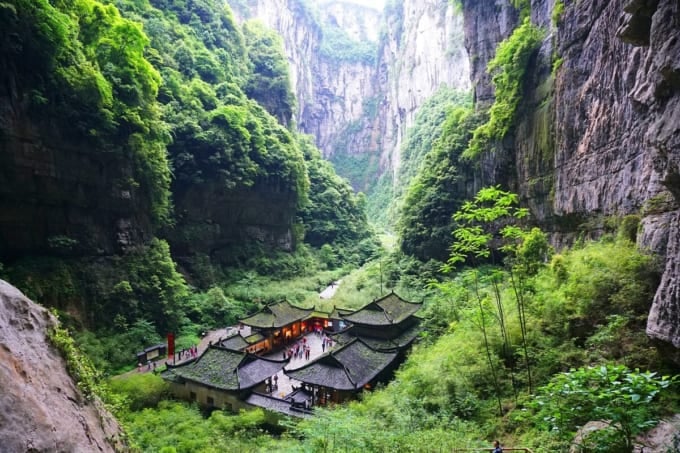
Wulong Karst, known as a treasure trove of karst landscapes, is located downstream along the Wu River, a tributary of the Yangtze River. It is home to three main tourist attractions: Three Natural Bridges, Longshuixia Fissure Gorge, and Furong Cave.
This region is rich in primeval forests and is home to many rare wildlife species, including leopards, red pandas, monkeys, and wild boars, with approximately 180 animal species, including protected species. In 2007, Wulong Karst was designated a UNESCO World Natural Heritage Site as part of the South China Karst.
The Three Natural Bridges, which lie within Yangshui Gorge, are a grand natural masterpiece consisting of two large sinkholes, Tianlong Tiankeng and Shenlong Tiankeng. The dramatic 280-meter-deep karst landscape is a breathtaking spectacle, while the world's largest group of three natural rock bridges formed by mountain ridges is truly astonishing.
Longshuixia Fissure Gorge is a narrow canyon carved deep into the ground, with an elevation drop of 350 meters from its upper layers to the bottom. Furong Cave, a stalactite cave, is considered one of the world’s top three caves alongside Mammoth Cave in the United States and Lascaux Cave in France. It is also known as a "scientific museum of caves," as it contains dolomite from 500 million years ago and over 30 types of mineral deposits.
Name: Wulong Karst
Address: Wulong County, Chongqing, People’s Republic of China
3. Great Hall of the People
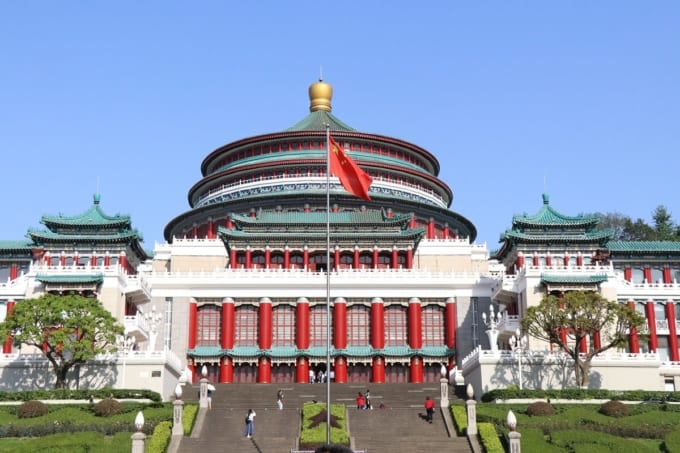
Built in 1954 and modeled after the Temple of Heaven in Beijing, the Great Hall of the People is one of Chongqing’s most iconic buildings. It consists of three main structures: the main hall, the South Wing, and the North Wing. The central Great Hall, standing at 65 meters tall, features a beautiful Sino-European architectural style with a large performance stage.
Flanking the Great Hall are the South Wing and North Wing, both distinguished by their characteristic double-tiered glazed tile roofs. In front of the Great Hall, a striking main gate leads to the vast People’s Square, a lush green space that serves as a popular gathering place for locals.
Name: Great Hall of the People
Address: 173 Renmin Rd, DaXiGou, Yuzhong Qu, Chongqing Shi
4. Chongqing Three Gorges Museum
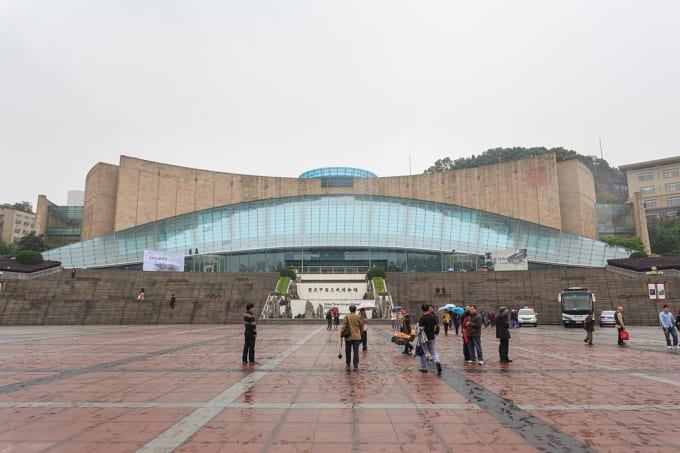
Located opposite the Great Hall of the People and spanning a vast area, the Chongqing Three Gorges Museum is one of China’s largest museums. It was established in 2000 through the merger of the China Three Gorges Museum and the Chongqing Museum.
The museum is notable for its glass dome architecture, with exterior walls adorned with relief carvings such as the "Palestinian Totem White Tiger," "Three Gorges Fish," and "Tree of the Palestinian Spirit."
Inside, the expansive museum is divided into four main themes, with highlights including cultural relics preserved due to the Three Gorges Dam construction and artifacts excavated during the project. The exhibits provide a deep insight into the history, culture, and natural environment of the Three Gorges region.
One must-see exhibit is the 30-ton stone "Book of Han," excavated in 2001. Known as a "living fossil" of ancient Chinese architecture, it is a significant historical artifact. The Chongqing Three Gorges Museum is a must-visit attraction, and it is highly recommended to explore it alongside the Great Hall of the People located across the street.
Name: Chongqing Three Gorges Museum
Address: 236 Renmin Rd, DaXiGou, Yuzhong Qu, Chongqing Shi
5. Beishan Park
Located in the northern part of Dazu City, Beishan Park is a beloved recreational area for locals. Within the park, visitors can find the Beishan Rock Carvings, which were created over approximately 250 years, starting from 892 AD during the Tang Dynasty. The park also features the "Buddha Bay Corridor," a 500-meter-long passage lined with over 10,000 magnificent Buddhist stone statues, including representations of Sun and Moon Guanyin, the Western Paradise, and Water Moon Guanyin.
Notable highlights include Cave 136’s Wheel of Dharma Treasury and Cave 245’s Amitayus Buddha Transformation. While the carvings at Beishan Park may seem more modest compared to the Dazu Rock Carvings, their delicate and vividly colored details captivate visitors. Unlike the often crowded Dazu Rock Carvings, Beishan Park offers a quieter environment, making it an excellent place to appreciate these remarkable stone sculptures at a leisurely pace.
Name: Beishan Park
Address: Yongchuan District, Chongqing, People’s Republic of China, Postal Code: 402160
6. Ciqikou Ancient Town
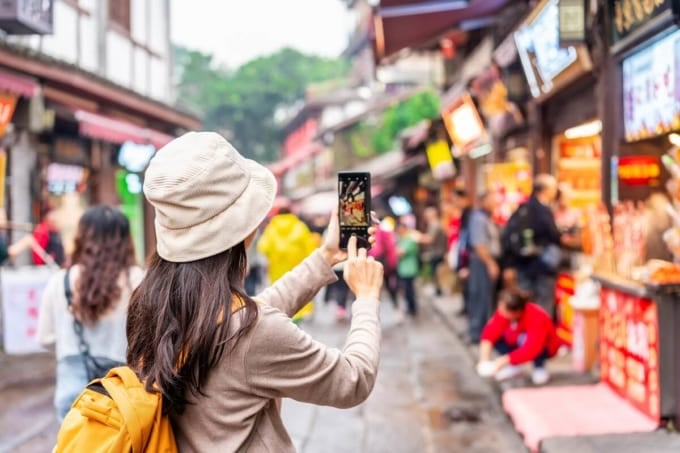
Known as "Little Chongqing," Ciqikou Ancient Town is a historic port town that flourished as a center of water transport along the Jialing River. Originally called "Longyin Town," it gained its current name during the Ming and Qing Dynasties due to its thriving porcelain production. In Ciqikou Ancient Town, visitors can enjoy a nostalgic stroll through its stone-paved streets lined with traditional houses, immersing themselves in the old-town atmosphere. Along the main street, known as Ciqikou Zheng Street, cafes, restaurants, tea houses, and souvenir shops line the path, bustling with tourists. Exploring the backstreets is also recommended, as it offers a glimpse into the daily lives of the locals.
On a hill overlooking the town stands Baolun Temple, built in the early Tang Dynasty. Also known as "Longyin Temple," it is historically significant as the temporary refuge of Emperor Jianwen, the second emperor of the Ming Dynasty. From here, visitors can enjoy a panoramic view of the town and the Jialing River's inlets, making it a perfect vantage point.
Taking the monorail is the recommended way to reach Ciqikou Ancient Town. Although slightly outside Chongqing’s city center, it remains one of the city's most popular tourist attractions, making it well worth the visit!
Name: Ciqikou Ancient Town
Address: Shapingba District, Chongqing Shi
7. Baidi City
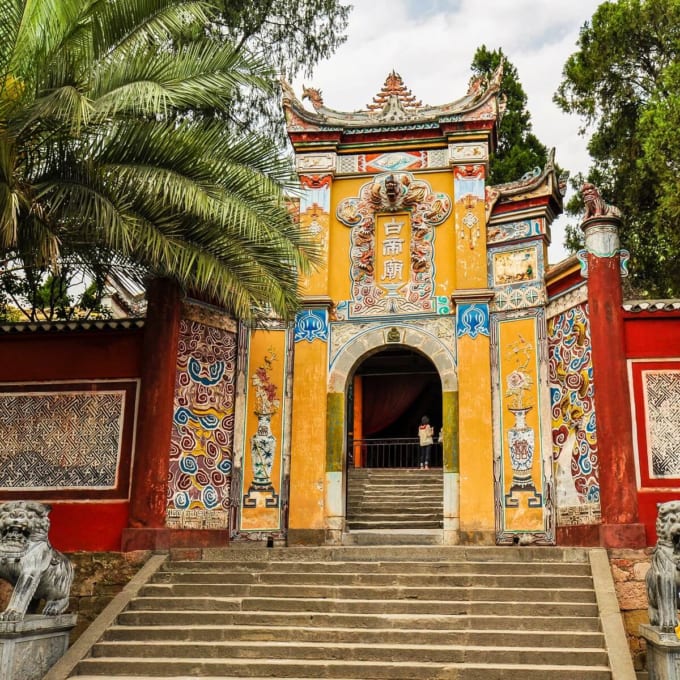
Originally called Ziyang City, Baidi City was a strategic military stronghold where Gongsun Shu ruled during the late Western Han Dynasty. The city comprises several buildings, including Mingliang Hall, Wuhou Shrine, Guanjing Pavilion, and Wangjiang Tower. Surrounded by water on all sides, the beauty of Baidi City rising above the river makes it one of the scenic highlights of the Three Gorges, attracting visitors from around the world.
Within Baidi City stands the Baidi Temple, home to numerous historical inscriptions and stone carvings. A key attraction is the "Bashu Bronze Sword," crafted with exquisite skill. Additionally, Baidi City has two stone forest areas—East and West—containing approximately 70 stone steles, with the most famous being the "Phoenix Stele" and the "Bamboo Leaf Stele" in the eastern section.
During the Three Kingdoms period, Emperor Liu Bei of Shu Han retreated to Baidi City after being defeated by the Wu army at the Battle of Yiling. He built Yongan Palace here and spent his final days in seclusion. Upon entering Baidi Temple, visitors can see Tuogu Hall, where the scene of Liu Bei entrusting his son to Zhuge Liang is reenacted, and Guansing Pavilion, where Zhuge Liang is said to have observed the stars. If you visit Chongqing, be sure to explore Baidi City alongside the breathtaking Three Gorges landscape and immerse yourself in its long history.
Name: Baidi City
Address: North bank of the Yangtze River, entrance to Qutang Gorge, Fengjie County, Chongqing Shi
Official/Related Website: https://www.chongqing.cn.emb-japan.go.jp/itpr_ja/kankoujouhou_juukei_baidicheng.html
8. Eling Park
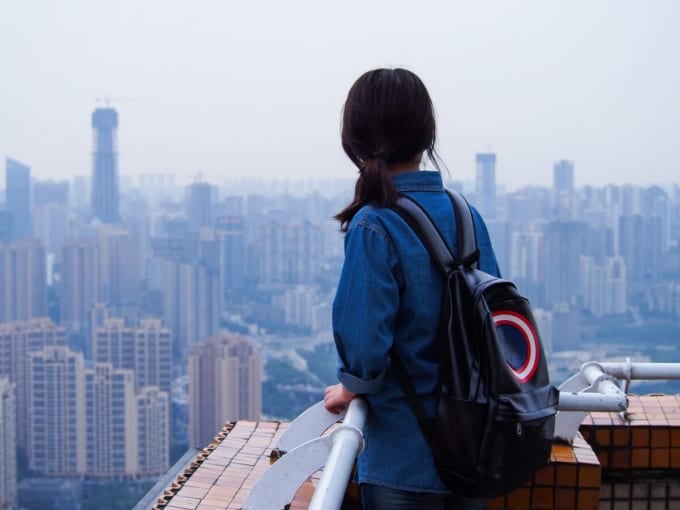
Eling Park is a hilltop park that was once the villa of a wealthy family, the Li family, during the late Qing Dynasty. Originally named "Liyuan," the park was later renamed Eling ("Goose Neck") because the area, situated between the Yangtze and Jialing Rivers, resembles a goose’s neck.
At the summit stands the Eight-Story Liangjiang Pavilion, which doubles as an observation tower. From the top floor, visitors can enjoy a sweeping view of the Yangtze River and Chongqing’s cityscape, making it a popular spot for both tourists and locals, especially for its stunning night views.
The park entrance features the South Gate, leading to an expansive area adorned with sculptures, lotus ponds, and stone monuments. Within the park, visitors can also explore Hiroshima Garden, a Japanese-style garden built as part of a cultural exchange between Chongqing and Hiroshima.
A notable site within the park is "Feige," a building where Chiang Kai-shek and his wife are said to have lived for about six months during the Anti-Japanese War. Other prominent figures such as Deng Xiaoping, Liu Bocheng, and He Long later used the residence. Additional attractions include the Suspension Bridge, Tiger Platform, Jiangshan Viewing Deck, and a bonsai garden, ensuring plenty to explore.
Name: Eling Park
Address: 181 Eling Main St, Yuzhong District, Chongqing Shi
9. Chongqing Zoo
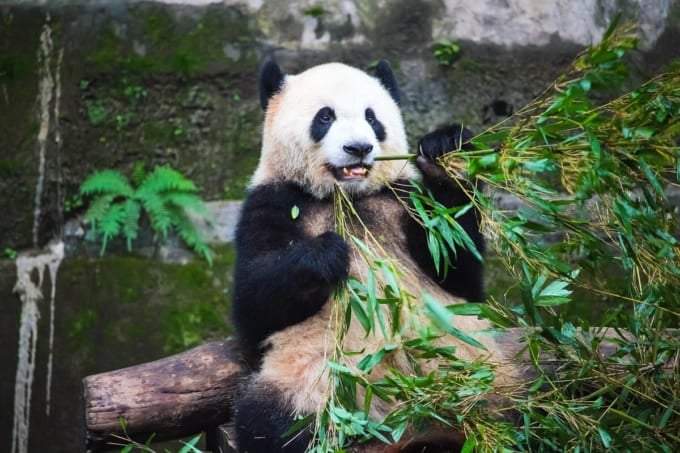
Located in the heart of Jiulongpo District, Chongqing Zoo is easily accessible, making it a favorite among both locals and tourists. On weekends, it is especially lively with families and children enjoying the various attractions.
The highlight of Chongqing Zoo is undoubtedly the giant pandas. The Panda House allows visitors to observe pandas roaming freely in a spacious environment. Given its reputation for panda conservation, the zoo also sells an extensive range of panda-themed souvenirs, making it an excellent spot for picking up Chongqing-related gifts.
Beyond pandas, the zoo is home to red pandas, a nationally protected species, as well as popular animals like lions, white tigers, elephants, giraffes, zebras, hippos, camels, and rhinos.
Set within a lush, hilly landscape, the zoo attracts visitors not only for animal watching but also for morning and evening walks. Additionally, the park features a small amusement park and boat rentals, making it a place where visitors can easily spend an entire day.
Name: Chongqing Zoo
Address: No. 25 Xijiao Road, Jiulongpo District, Chongqing
Official/Related Website: http://www.cqzoo.com/cqzoo/index.html
10. Gele Mountain Forest Park
Gele Mountain Forest Park gained fame during the Anti-Japanese War when Chongqing served as China's temporary capital. The mountain became widely known as the "Mountain of Heroes" through the novel Red Crag. Covered in lush greenery, Gele Mountain was the site where Chiang Kai-shek built his official residence, "Linyuan," leaving behind many significant poems and inscriptions.
The scenic mountain is home to various breathtaking natural sites, including "The Wondrous Sound of Gele," "Clouds Above the Clouds," and "Lion Rock Cliff." The park is considered one of the top destinations for appreciating Chongqing’s grand natural landscapes. It also features hiking trails and a cable car for sightseeing.
Gele Mountain is also known as a rock-climbing paradise, with numerous climbing spots scattered throughout. Other outdoor activities available in the park include aerial adventure mazes, off-road go-karting through the forest, and mountain biking. From the park’s observation deck, visitors can take in a panoramic view of Chongqing, making it an excellent vantage point. Be sure to visit Gele Mountain Forest Park and experience its natural beauty and adventurous activities!
Name: Gele Mountain Forest Park
Address: Shapingba District, Chongqing Shi
11. Bai Gongguan and Zhazidong
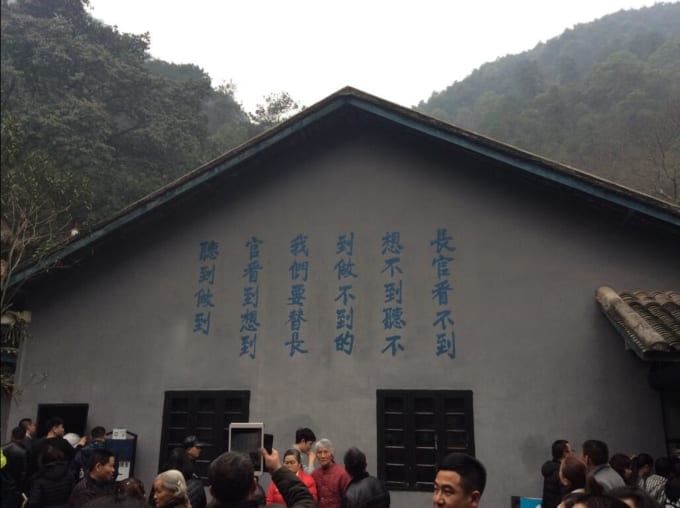
Located on the slopes of Gele Mountain, Bai Gongguan and Zhazidong are remnants of the Sino-American Special Technical Cooperation Institute, which was established by the Kuomintang with American assistance in 1942. Originally a training facility for special agents, it was also used by the Nationalist government as a detention center for political prisoners, including Communist Party members and other opponents.
Among these sites, Bai Gongguan and Zhazidong are particularly well-known for being places where many revolutionary martyrs (Chinese Communist Party members) lost their lives. In 1955, the Martyrs' Cemetery and Memorial Tower were built, and the former prison was opened to the public as the "Gele Mountain Martyrs' Cemetery."
The cemetery contains the ruins of the detention center, sculptures depicting revolutionary martyrs, stone tablets inscribed with their poetry, and their burial sites. The main building displays relics and documents from that era, including torture devices and interrogation rooms.
Though Gele Mountain is marked by its tragic history, its name is said to originate from the legend that Yu the Great, the founder of the Xia Dynasty, once gathered feudal lords here to sing and perform music.
Name: Bai Gongguan and Zhazidong
Address: Shapingba District, Chongqing
12. Chongqing Luohan Temple

Built between 1064 and 1067, Chongqing Luohan Temple is a Buddhist temple originally known as "Zhiping Temple." It was reconstructed in 1885 by Master Longfa, who built the Arhat Hall, housing 524 simple yet expressive clay statues of Arhats. The temple was then renamed Luohan Temple.
In 1983, it was designated as a nationally significant Han Chinese Buddhist temple and has since become one of Chongqing’s most famous attractions. Within its Sutra Collection Pavilion, ancient Buddhist scriptures, Sanskrit and Tibetan texts, historical documents, and calligraphy works are preserved.
Luohan Temple stands prominently amidst Chongqing’s towering skyscrapers, making it a striking landmark. It is also conveniently located near the Liberation Monument (Jiefangbei), so be sure to stop by when visiting the area.
Name: Chongqing Luohan Temple
Address: 7 Luohansi St, Jiefangbei Shangquan, Yuzhong District, Chongqing Shi
Official/Related Website: http://www.chongqingtrip.org/attractions/luohan-temple.htm
13. Chongqing Beibei Hot Springs
Chongqing has a long history of hot springs, earning it the nickname "The City of Hot Springs." Among the many hot spring locations, Beibei Hot Springs is particularly famous, boasting ten different spring sources with exceptional water quality and abundant flow, making it highly regarded for its beauty-enhancing properties.
In 423 AD, during the Southern Dynasties, a temple called Wenquan Temple was built here. The area is also home to valuable historical and cultural relics, including Ming and Qing Dynasty structures, Song Dynasty rock carvings of Arhats, Ming Dynasty stone tablets, and the Panlong Tower.
In 1927, entrepreneur Lu Zuofu developed the Jialing River Hot Spring Park, adding leisure facilities such as heated swimming pools and restaurants. The site was later renamed Chongqing Beibei Hot Spring Park.
Unlike Japan, where hot springs are typically enjoyed nude, in China, visitors wear swimsuits when bathing. Beibei Hot Springs is a popular tourist spot, so take the opportunity to relax and rejuvenate here during your trip.
Name: Chongqing Beibei Hot Springs
Address: At the foot of Jinyun Mountain, Wentang Gorge, Jialing River, Beibei District, Chongqing City
14. Pipashan Park
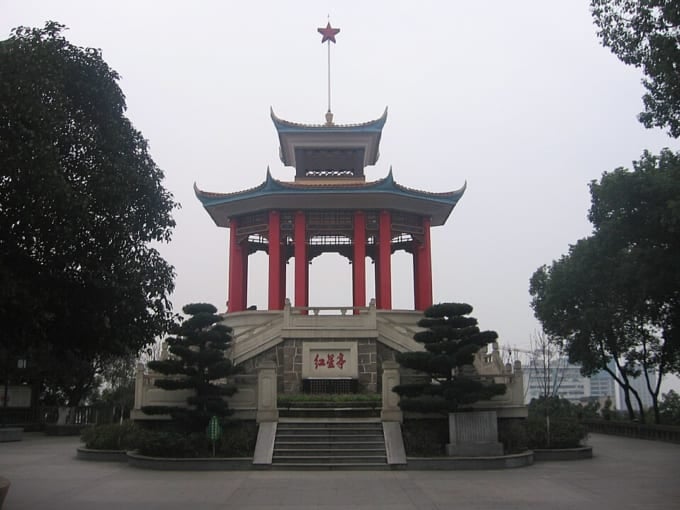
Located on an elevated area in the heart of Chongqing, Pipashan Park was originally the private residence of Wang Lingji, the chairman of Sichuan Province under the Kuomintang. The park's name, meaning "Loquat Mountain," comes from the large number of loquat trees once planted there. It was opened to the public in 1955, and the former residence now serves as the Chongqing Museum of Natural History.
One of the park’s main highlights is Hongxing Pavilion, an observation deck offering a panoramic view of Chongqing’s cityscape, the confluence of the Yangtze and Jialing Rivers, and Chaotianmen. The park is especially famous for its night views, attracting many visitors who come to admire the illuminated city skyline. If you visit Chongqing, don’t miss the chance to take in this stunning scenery.
Name: Pipashan Park
Address: Zhongshan 2nd Rd, Yuzhong District, Chongqing
15. Guiyuan
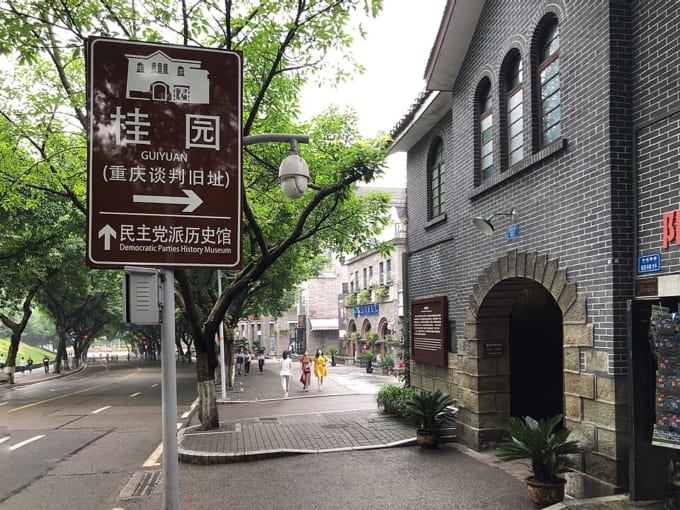
Originally the residence of Zhang Zhizhong, the head of the Kuomintang delegation, Guiyuan is historically significant as the place where Mao Zedong stayed during the 1945 Chongqing Negotiations, a discussion on post-war cooperation between the Communist Party and the Kuomintang. The garden’s name is said to come from the two Osmanthus trees growing within the grounds.
Covering an area of 700 square meters, the site features a main building made of brick and wood. The first-floor hall is where the "Double Tenth Agreement" was signed between Mao Zedong, Zhou Enlai, and the Kuomintang. Adjacent to this hall are rooms where Mao Zedong and Zhou Enlai hosted important foreign guests. On the second floor, visitors can see the offices used by both leaders.
Guiyuan was opened to the public in 1977 and now serves as a revolutionary memorial hall, displaying photographs, newspapers, and other historical materials from the Chongqing Negotiations. Since it is not typically crowded with tourists, it is an ideal place for a quiet and reflective visit.
Name: Guiyuan
Address: 65 Zhongshan 4th Rd, Yuzhong District, Chongqing, China
16. Chongqing Safari Park
Chongqing Safari Park is one of China’s largest wildlife parks dedicated to the protection of wild animals. Visitors can see a wide variety of rare species from both China and around the world.
The park is home to golden tigers, Maltese tigers, white tigers, white rhinos, giraffes, polar bears, parrots, toucans, flamingos, pandas, serows, hornbills, and many more fascinating animals!
With both drive-through and walking areas, visitors can get up close to the animals and experience them in a natural setting. Due to its collection of rare species, Chongqing Safari Park is a popular destination for tourists.
Name: Chongqing Safari Park
Address: 205 Provincial Rd, Shuangzhu Town, Yongchuan, Chongqing
17. Chaotianmen
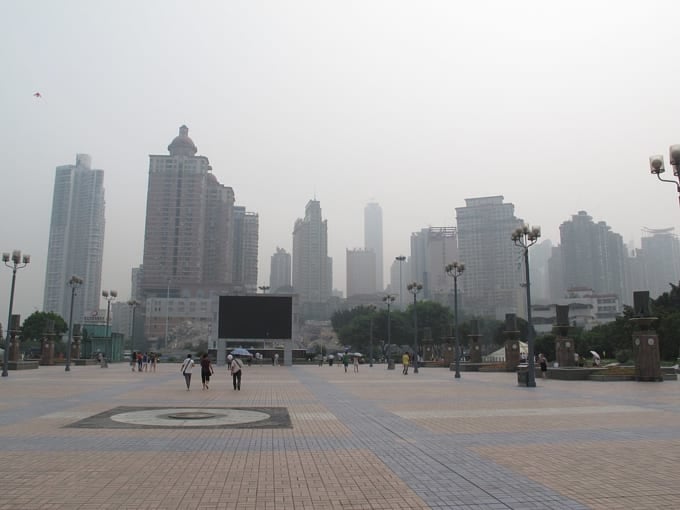
Located at the eastern edge of downtown Chongqing, Chaotianmen Square is named after its historical role as the place where local officials issued imperial decrees. The Chaotianmen Dock at Chongqing Port has long been a key hub for Yangtze River transportation. It is situated at the confluence of the Jialing River to the north and the Yangtze River to the east, serving as the starting point for Three Gorges cruises.
Chongqing is known for its spectacular night views, and Chaotianmen is one of the top spots to enjoy them. Many visitors gather along the riverbanks at night to admire the illuminated cityscape across the water.
Name: Chaotianmen
Address: Yuzhong District, Chongqing
Official/Related Website: https://www.chongqing.cn.emb-japan.go.jp/itpr_ja/chaotianmen.html
18. Huguang Guild Hall
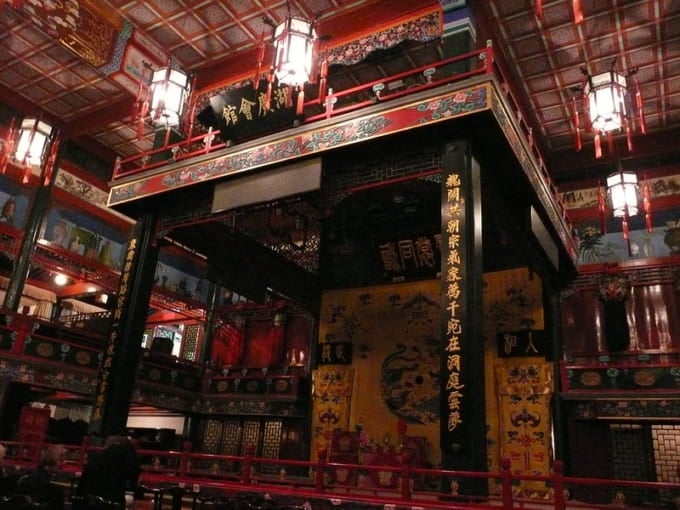
Located on the banks of the Yangtze River, Huguang Guild Hall is the largest surviving guild hall complex in China. Built during the Qing Dynasty, it consists of three main structures: Yuwang Palace, dedicated to Yu the Great (a legendary flood-control deity), Guangdong Guild Hall, and Qian’an Guild Hall. The complex has undergone multiple renovations and expansions over the years to reach its current form.
Huguang Guild Hall played a vital role in supporting commerce for migrants who moved to Chongqing during the Ming and Qing Dynasties. Many paintings and cultural artifacts on display here illustrate the historical significance of this site. When visiting Chongqing, be sure to explore this elegant architectural masterpiece.
Name: Huguang Guild Hall
Address: Changjiang Binjiang Rd, Yuzhong District, Chongqing
Official/Related Website: https://www.chongqing.cn.emb-japan.go.jp/itpr_ja/huguanghuiguan.html
19. Chongqing Liberation Monument
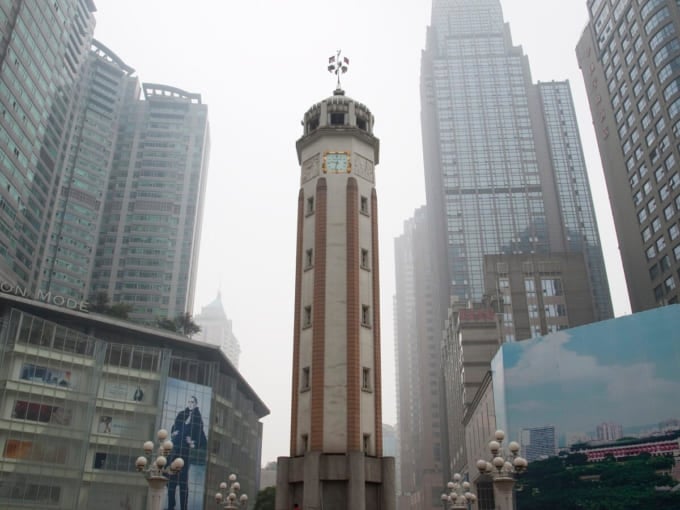
In the heart of Chongqing’s bustling commercial district, surrounded by skyscrapers and shopping streets, stands the Chongqing Liberation Monument, a historical clock tower. Originally built in 1941 by the Nationalist government to boost the morale of wartime soldiers, it was later reconstructed in 1946 as the "Victory Monument of the War of Resistance Against Japan" to commemorate China’s triumph.
In 1950, after Chongqing was liberated by the People’s Liberation Army, the monument was renamed the Chongqing Liberation Monument. Today, it is one of the city's most iconic landmarks and a major tourist attraction. The surrounding pedestrian area is packed with office buildings, luxury hotels, brand-name stores, department stores, restaurants, and cinemas, making it a lively and vibrant part of the city.
Name: Chongqing Liberation Monument
Address: 177 Minzu Rd, Jiefangbei Shangquan, Yuzhong District, Chongqing
Official/Related Website: https://www.chongqing.cn.emb-japan.go.jp/itpr_ja/jiefangbei.html
20. Three Gorges Cruise
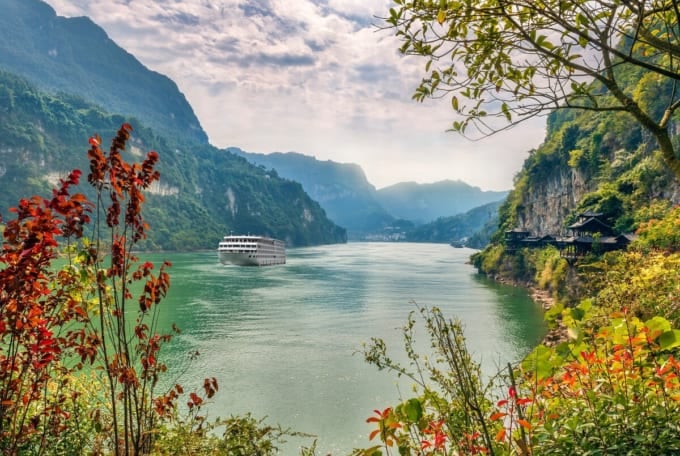
When it comes to sightseeing in Chongqing, the "Three Gorges Cruise" is a must. The Three Gorges refers to the stunning Yangtze River gorges: Qutang Gorge, Wu Gorge, and Xiling Gorge. These three areas are considered the most breathtaking sections of the Yangtze River, captivating visitors for centuries. Even today, the Three Gorges remain one of the most famous scenic destinations in the world.
Luxury cruise ships operate regularly from Chongqing, allowing travelers to enjoy the incredible landscapes and visit historical sites along the Yangtze River. The duration and routes of the cruises vary depending on the company, so it is advisable to check in advance. A cruise through the Three Gorges is a fantastic way to experience both the grandeur of nature and the deep historical heritage of the region.
Name: Three Gorges Cruise
Official/Related Website: https://www.chongqing.cn.emb-japan.go.jp/itpr_ja/sanxiayou.html
◎ Summary of Chongqing's Tourist Attractions
Chongqing is a captivating city where majestic natural landscapes, modern urban developments, and traditional historic neighborhoods coexist. Visitors are often surprised and enchanted by the unique cityscape, where temples stand among towering skyscrapers and a large zoo is located right in the city center.
Chongqing is a relatively safe city that attracts many tourists from around the world every year. With excellent accessibility to various sightseeing spots, visitors can fully enjoy exploring the city. If you want to witness the dynamic beauty of the Yangtze River, a luxurious cruise is highly recommended for an unforgettable journey.
RELATED ARTICLES
REGIONS
CATEGORIES
FEATURED ON travel
-
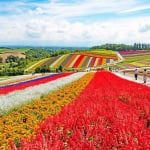
Where will you go for the summer vacation? Introducing recommended spots for domestic travel
-
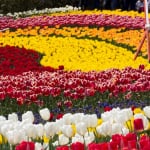
Kaizu City’s Recommended 7 Tourist Spots. Enjoy the Culture and History Nurtured by Wajū!
-
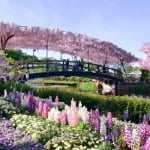
What Makes Ashikaga Flower Park So Special? A Treasure Trove of Photo-Worthy Spots!
-
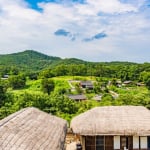
600 Years of Radiant Tradition: Korea’s Historic Villages of Hahoe and Yangdong
-

Two-Colored Seas and a Pink Beach! 4 Must-Visit Spots in North Eleuthera
MOST POPULAR ON travel
-
 1
1Doha: Must-see Attractions in the Capital of Qatar
-
 2
2Toronto: 10 Things to do in this Picturesque Canadian City
-
 3
3Amarillo: A City Famous for It’s Amazing Canyons, Great History and Music
-
 4
4South Korea: Dazzling Scenery, Rich Culture and Fascinating History
-
 5
5Kuwait: A Country in Middle East Asia Famous for Hot Sand Dunes and Stunning Cityscape


